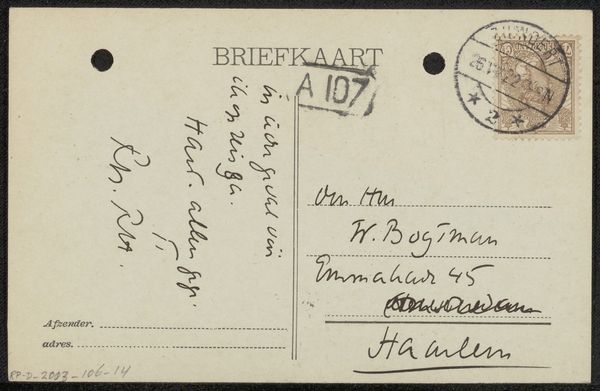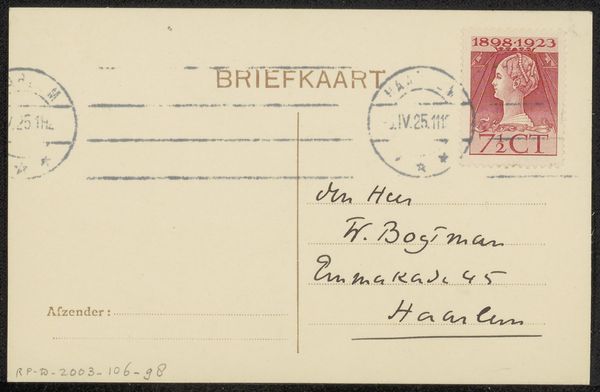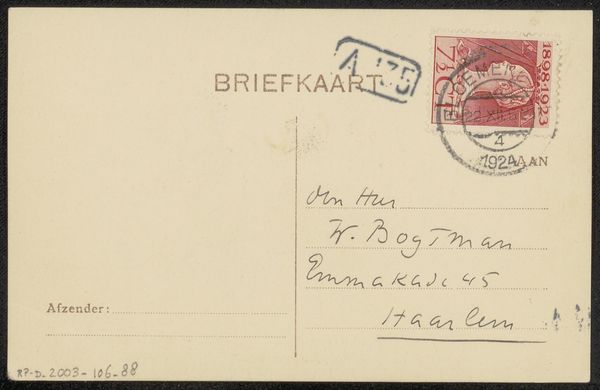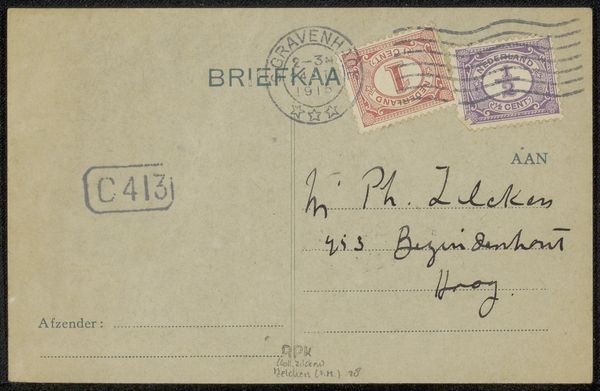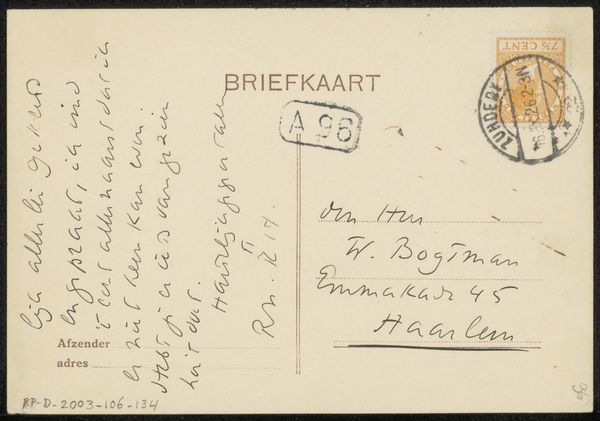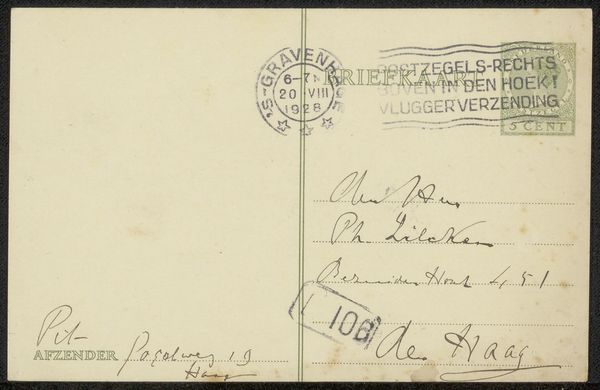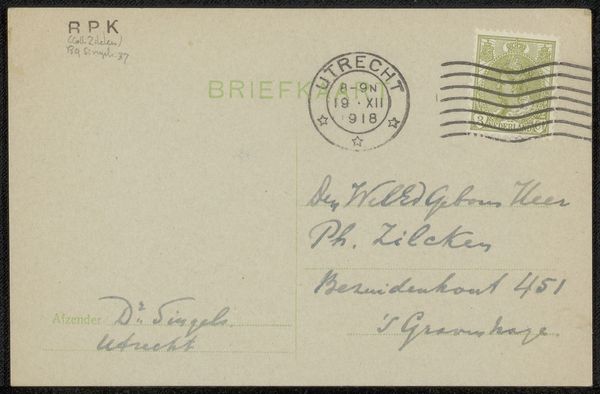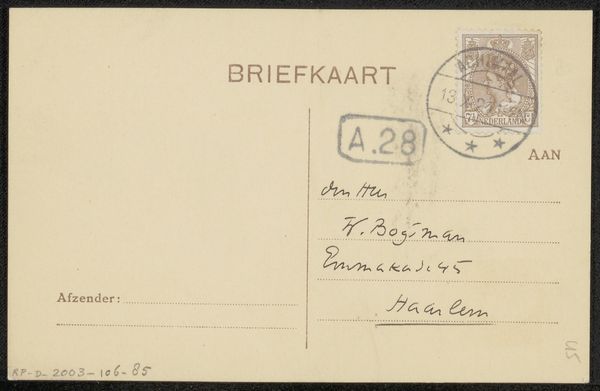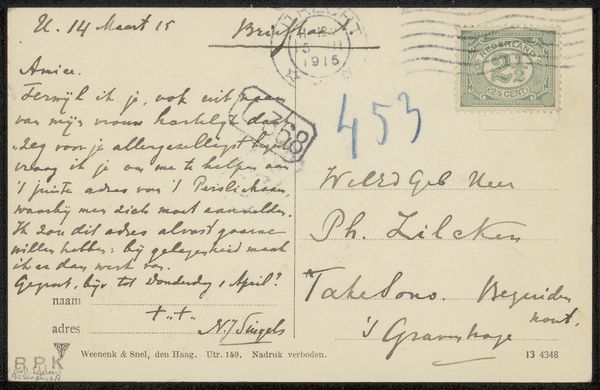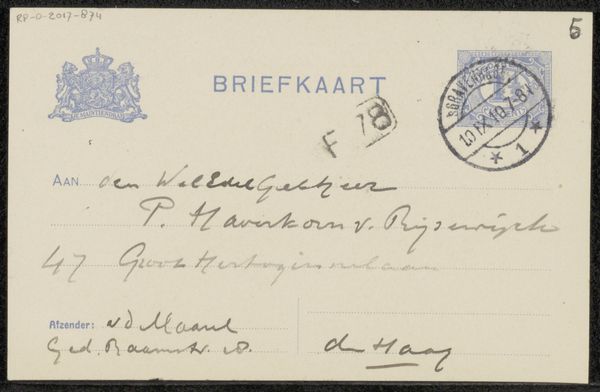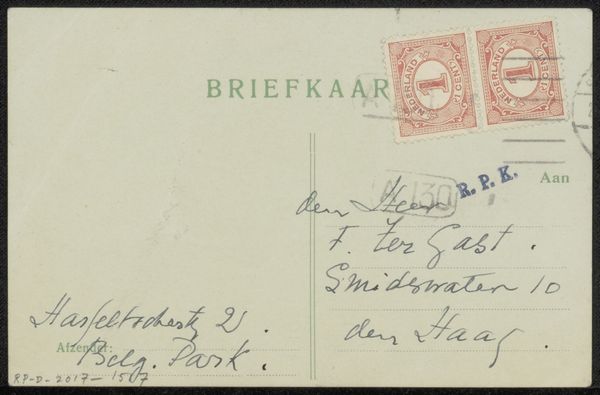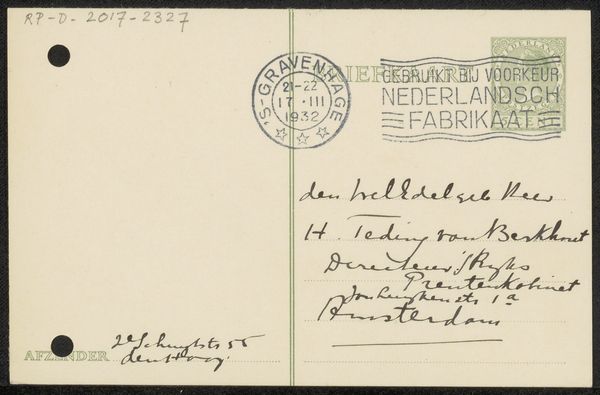
#
comic strip sketch
#
pen sketch
#
hand drawn type
#
personal sketchbook
#
ink drawing experimentation
#
pen-ink sketch
#
pen work
#
sketchbook drawing
#
storyboard and sketchbook work
#
sketchbook art
Copyright: Rijks Museum: Open Domain
Curator: We're looking at "Briefkaart aan Willem Bogtman," a postcard likely created in 1924 by Richard Nicolaüs Roland Holst, part of the Rijksmuseum collection. It’s got this wonderful mix of handwritten text, a postal stamp, and what seems like the beginnings of a message. Editor: It feels intimate, doesn't it? A stolen moment. I love the glimpse into someone’s everyday life—scribbles on the back of a postcard. Did people even think of these as lasting pieces? Curator: The postcard, a seemingly trivial object, allows us to access a web of socio-political layers. Think about the postal system at that time: an infrastructure built on global communication, but also colonial power. Who was this Willem Bogtman and how does his identity shape our reading of the piece? The Royal Mail stamp subtly suggests a global reach but perhaps a reminder of Empire? Editor: Hmmm, true, I am always taken back when reminded of the power of colonial powers within seemingly mundane acts like simply mailing a postcard. Still I look at this and think... this must have meant something specific to the recipient; a shared joke? An inside view only understood by the sender. I can’t know the full impact on the reciever, but this knowledge feels precious. Curator: Exactly, these personal details highlight that postcard communication also served various purposes for individuals and communities marginalized by dominant historical narratives. The physical act of writing, the intentionality of the address. We should be sensitive to the lives inscribed, and who those in the margins were writing to and writing about, not just those in power. Editor: Right. It's a tangible connection to a specific time and relationship, though mostly it makes me want to go to my nearest post office and snail-mail a letter for once in my life instead of only texting! Something so permanent in an age of digital deletion. Curator: Indeed, it asks us to reconsider how everyday objects carry these histories with them. It's a lens to look at that particular time, or an avenue into current debates. Editor: I never expected such depths from just a humble postcard. Thanks for untangling all of that!
Comments
No comments
Be the first to comment and join the conversation on the ultimate creative platform.
